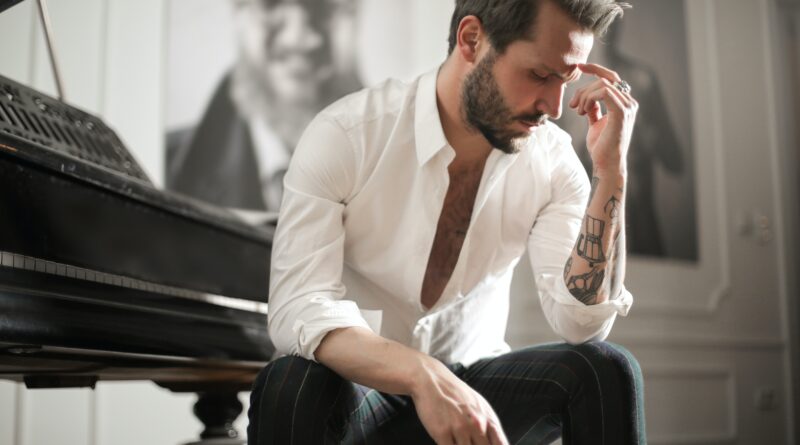Dramatic Portrait Photography: How to Light Your Subject for Impact
Dramatic portrait photography is all about creating impact and emotion through the use of lighting. By carefully controlling the light in your portrait, you can create a mood, emphasize certain features, and capture the personality of your subject. In this article, we’ll cover some techniques for lighting your subject for maximum impact in your dramatic portrait photography.
- Choose the Right Lighting Setup
There are a variety of lighting setups that can be used to create dramatic portraits, but some of the most popular setups include:
- Rembrandt Lighting: This lighting setup creates a triangle of light under the subject’s eye on the shadow side of the face. It’s named after the famous painter who often used this type of lighting in his work.
- Butterfly Lighting: This lighting setup places the main light source above and in front of the subject, creating a shadow under the nose that resembles a butterfly’s wings.
- Split Lighting: This lighting setup involves placing the main light source directly to the side of the subject, creating a strong shadow that splits the face in half.
- High-Key Lighting: This lighting setup involves using a bright, even light source to create a light and airy portrait.
- Use Directional Light
Directional light is important in creating dramatic portraits, as it can help to sculpt the face and create depth. By positioning your light source at an angle, you can create shadows that add dimension and texture to the face.
- Control the Intensity of Light
The intensity of light can also play a role in creating dramatic portraits. For example, if you want to create a high-contrast portrait with deep shadows and bright highlights, you can use a strong, focused light source. On the other hand, if you want to create a softer, more diffused portrait, you can use a larger, more diffuse light source.
- Use Reflectors and Diffusers
Reflectors and diffusers can be used to control the direction and intensity of light in your portrait. For example, a reflector can be used to bounce light onto the subject’s face from a different angle, creating a more even and flattering portrait. A diffuser can be used to soften the light and create a more natural-looking portrait.
- Experiment with Colored Gels
Colored gels can be used to create dramatic and moody portraits by adding a subtle color cast to the light. For example, a blue gel can create a cold and moody atmosphere, while a red gel can create a warm and intimate dramatic portraiture.
- Use Creative Lighting Techniques
Finally, don’t be afraid to experiment with creative lighting techniques to create unique and impactful portraits. For example, you can use a prism or crystal to refract light and create interesting patterns, or use a smoke machine to create a hazy and atmospheric portrait.
Tips:
Here are some additional tips to help you create stunning dramatic portraits using lighting:
- Use Shadows to Your Advantage
Shadows can add depth and mood to your portrait. Experiment with the angle and intensity of your light source to create interesting shadows on your subject’s face. Shadows can also be used to create a sense of mystery and intrigue in your portraits.
- Consider the Background
The background of your portrait can also play a role in creating drama and impact. Consider using a dark or textured background to contrast with your subject and create a dramatic effect. A simple, uncluttered background can also help to emphasize your subject and create a more impactful portrait.
- Pay Attention to Your Subject’s Features
Lighting can be used to emphasize certain features of your subject’s face. For example, if your subject has striking eyes, you can use a focused light source to draw attention to them. On the other hand, if your subject has strong cheekbones, you can use side lighting to create shadows that emphasize them.
- Use Multiple Light Sources
Using multiple light sources can help you to create a more dynamic and interesting portrait. For example, you can use a main light source to illuminate your subject’s face, and a secondary light source to create a rim or hair light that adds depth and texture to the portrait.
- Play with Contrast
Contrast can be used to create drama and impact in your portrait. Experiment with high-contrast lighting setups to create portraits with deep shadows and bright highlights. Alternatively, you can use low-contrast lighting to create a softer and more romantic portrait.
- Practice, Practice, Practice
Creating impactful and dramatic portraits using lighting takes practice and experimentation. Don’t be afraid to try new techniques and setups, and don’t get discouraged if your first attempts don’t turn out as you had hoped. Keep practicing and learning, and you’ll soon be creating stunning and memorable portraits that capture the emotion and personality of your subject.
By using these tips and techniques, you can create stunning dramatic portraits that capture the personality and emotion of your subject. Remember to experiment with different lighting setups, pay attention to your subject’s features, and practice, practice, practice to develop your skills and create truly impactful portraits.
FAQs
- What equipment do I need for dramatic portrait photography?
To create dramatic portrait photography, you will need a camera with manual controls and a lens that is suitable for portraits. You will also need lighting equipment such as studio lights, speedlights, or continuous lighting sources. Light modifiers such as softboxes, umbrellas, and diffusers can also be helpful.
- Do I need a professional studio to create dramatic portrait photography?
You do not necessarily need a professional studio to create dramatic portrait photography. You can create stunning portraits using natural light or by using portable lighting equipment in a variety of locations such as outdoors, in your home, or in a rented space.
- What types of lighting setups are best for dramatic portrait photography?
There are many lighting setups that can be used to create dramatic portrait photography. High-contrast lighting setups with deep shadows and bright highlights can create a dramatic effect, while low-contrast lighting can create a softer and more romantic effect. Experiment with different lighting setups to find the best approach for your subject and the mood you want to convey.
- How do I balance light and shadow in my portraits?
Balancing light and shadow is an important aspect of creating dramatic portrait photography. One approach is to use a main light source to illuminate your subject’s face, and then use a fill light or reflector to fill in the shadows. Alternatively, you can embrace the shadows and use them to create a more dramatic and moody effect.
- How do I create a rim or hair light in my portraits?
Creating a rim or hair light can add depth and texture to your portraits. One approach is to use a separate light source behind your subject and to the side to create a subtle rim of light around the edges of their body or hair. Alternatively, you can use a reflector to bounce light back onto your subject’s hair to create a hair light.




